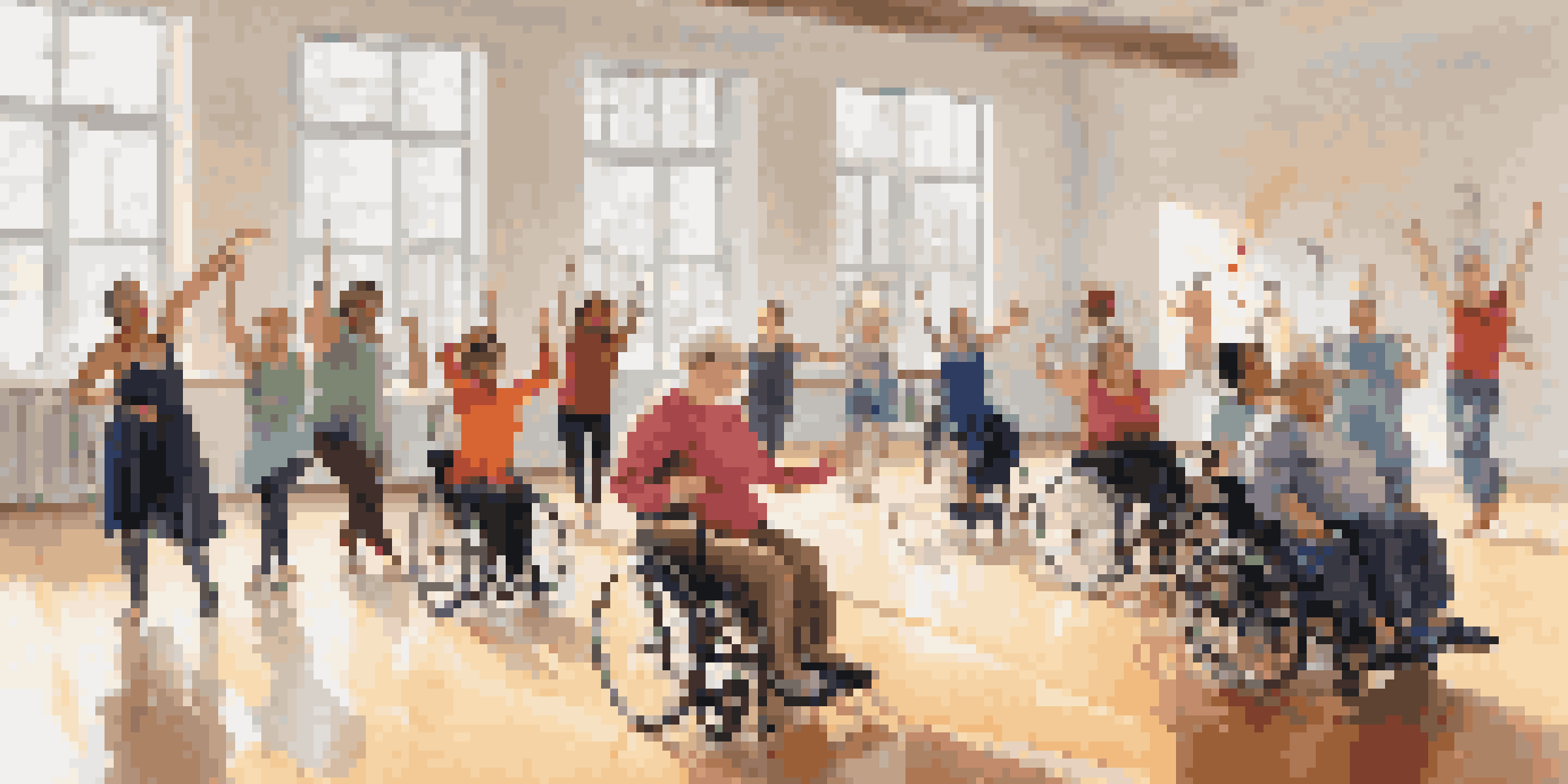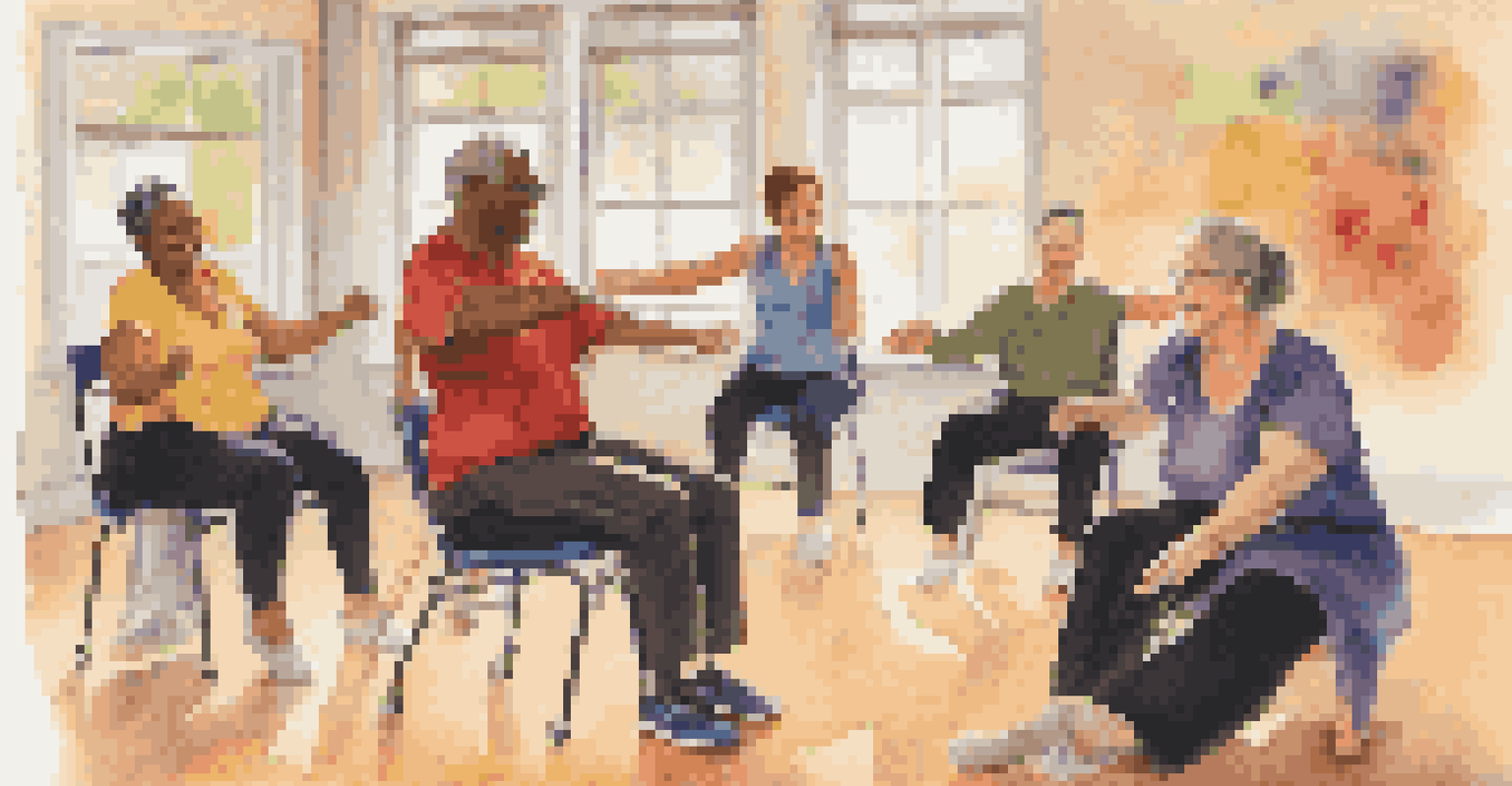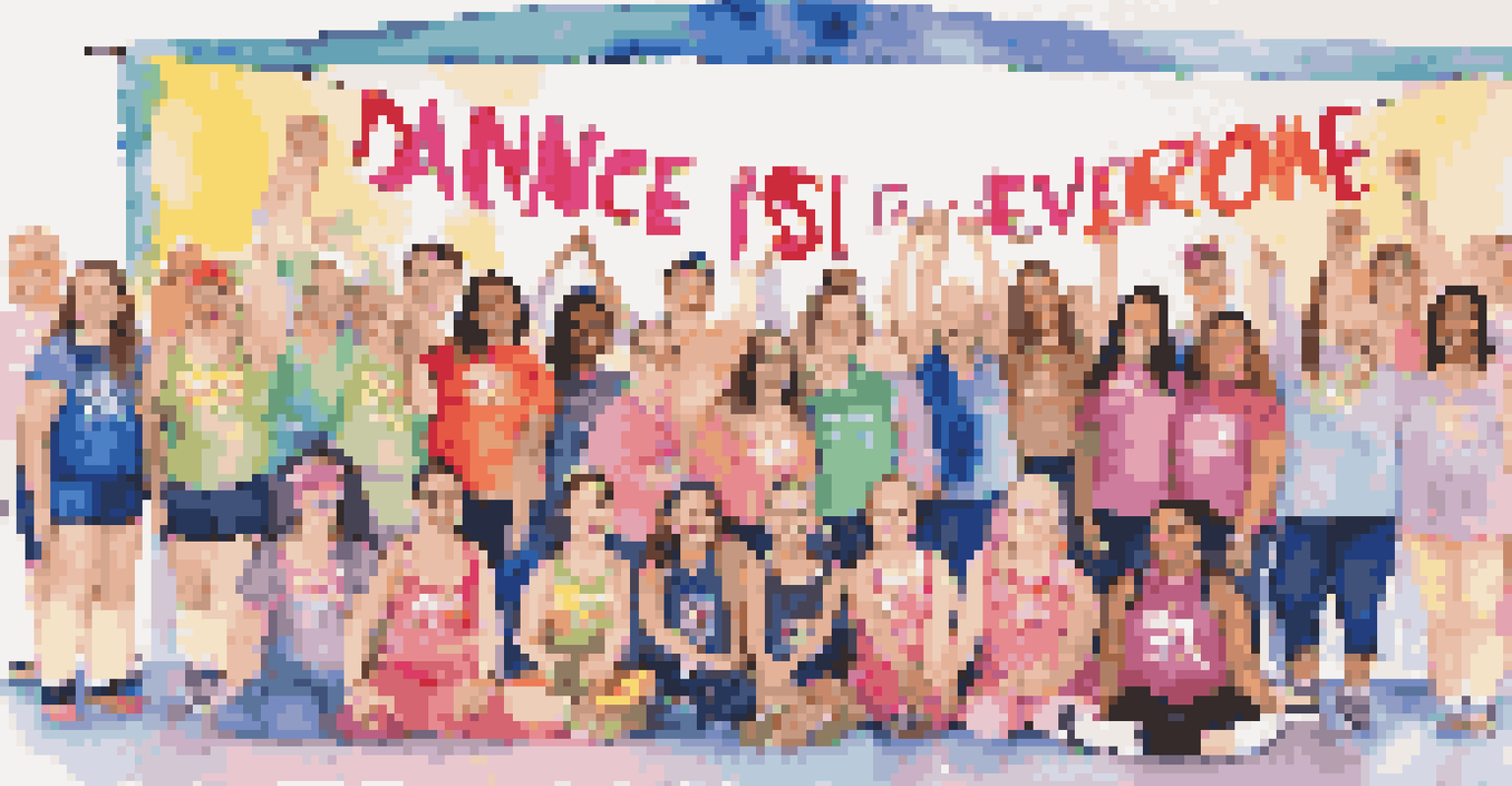Adaptive Dance Workshops: Training for Inclusivity

What are Adaptive Dance Workshops?
Adaptive dance workshops are specially designed programs that focus on making dance accessible for individuals of all abilities. Unlike traditional dance classes, these workshops cater to participants with physical, emotional, or cognitive challenges. The goal is to foster a supportive environment where everyone can express themselves through movement, regardless of their skills or limitations.
Dance is the hidden language of the soul.
These workshops often incorporate various dance styles, from ballet to hip-hop, allowing participants to explore different forms of expression. Instructors are trained to adapt movements and techniques to meet the needs of each individual, ensuring that everyone can participate fully. This emphasis on inclusivity not only promotes self-expression but also builds confidence and community among participants.
Imagine a space where the joy of dance is not confined by ability but is instead a celebration of diversity. Adaptive dance workshops create this atmosphere, inviting people from all walks of life to connect through rhythm and movement. It's a beautiful reminder that dance is for everyone, and each participant brings something unique to the dance floor.
The Benefits of Adaptive Dance
Participating in adaptive dance workshops offers numerous benefits, both physically and emotionally. For individuals with disabilities, dance can improve motor skills, coordination, and overall fitness. Additionally, engaging in movement helps to enhance body awareness and spatial orientation, which are crucial for daily activities.

But the benefits extend far beyond the physical. Adaptive dance fosters social connections and reduces feelings of isolation, which can be particularly important for individuals with disabilities. As participants move together, they build friendships and develop a sense of belonging, creating a vibrant community where everyone is celebrated.
Adaptive Dance Promotes Inclusivity
Adaptive dance workshops create a supportive environment where participants of all abilities can express themselves through movement.
Moreover, the emotional impact of dance should not be overlooked. Expressing oneself through movement can serve as a powerful outlet for feelings and creativity. Many participants find joy and liberation in dance, which can lead to improved mental health and overall well-being.
Creating an Inclusive Environment
A key element of adaptive dance workshops is the creation of an inclusive and welcoming environment. This starts with the instructors, who are often trained in both dance and disability awareness. They play a crucial role in understanding the diverse needs of participants and adapting the curriculum accordingly.
The only limit to our realization of tomorrow will be our doubts of today.
In addition to skilled instructors, the physical space must also be accessible. This means considering factors like wheelchair access, appropriate flooring, and ample room for movement. When participants feel safe and comfortable in their surroundings, they are more likely to engage fully and enjoy the experience.
Inclusivity also extends to the language used in workshops. Instructors are encouraged to use person-first language, emphasizing the individual before their disability. This small but significant change fosters a culture of respect and empowerment, allowing everyone to feel valued in the dance community.
Adapting Dance Techniques for All Abilities
One of the most fascinating aspects of adaptive dance is the way traditional techniques are modified to suit various abilities. For example, a ballet class might adapt pliés by allowing participants to perform the movement while seated if needed. This creativity ensures that everyone can experience the joy of dance without feeling left out.
Instructors often use props or assistive devices to facilitate movement. Items like scarves, balls, or even stretch bands can enhance the dancing experience while making it more accessible. By incorporating these tools, participants can explore their range of motion and express themselves in new ways.
Benefits Extend Beyond Movement
These workshops improve physical skills while fostering social connections and enhancing emotional well-being among participants.
The beauty of adaptive dance lies in its flexibility. Each workshop can be tailored to the specific needs and preferences of the participants, creating a personalized experience. This adaptability not only keeps the classes engaging but also empowers individuals to take ownership of their dance journey.
Success Stories from Adaptive Dance Participants
The impact of adaptive dance workshops can be seen through the inspiring stories of participants. Many individuals have shared how dance has transformed their lives, providing them with a sense of purpose and community. For some, it has opened doors to new friendships and opportunities they never thought possible.
One participant, who initially struggled with social anxiety, found solace in dance. Through workshops, they learned to express themselves and connect with others, ultimately gaining confidence both in and out of the dance studio. Such stories highlight the profound effects of adaptive dance on mental health and personal growth.
These success stories serve as a reminder of the power of movement and expression. They illustrate how adaptive dance not only changes lives but also challenges societal perceptions of ability, encouraging everyone to embrace their unique journey.
Getting Involved in Adaptive Dance
If you’re interested in exploring adaptive dance, there are many ways to get involved. Local community centers, dance studios, and nonprofits often offer adaptive dance workshops tailored to various skill levels and ages. A quick online search can help you find opportunities in your area, whether you want to participate or volunteer.
For those interested in teaching, pursuing training in adaptive dance can be incredibly rewarding. Many organizations offer certification programs that equip instructors with the skills needed to create an inclusive environment. This training not only enhances their teaching capabilities but also deepens their understanding of the diverse needs of their students.
Future Focused on Accessibility
As awareness grows, adaptive dance continues to evolve, breaking barriers and ensuring that everyone has a place on the dance floor.
Joining an adaptive dance workshop can be a life-changing experience. Whether you’re a seasoned dancer or a complete beginner, there’s a place for everyone. So, lace up those dance shoes and step into a world where movement knows no boundaries!
The Future of Adaptive Dance
As awareness of inclusivity grows, the future of adaptive dance workshops looks bright. More organizations are recognizing the value of offering tailored programs that cater to individuals of all abilities. This shift not only broadens participation but also enriches the dance community as a whole.
Advancements in technology and techniques will likely continue to evolve adaptive dance practices. From virtual workshops to innovative performance methods, the possibilities are endless. This evolution ensures that more people can access and enjoy dance, regardless of their circumstances.

Ultimately, the future of adaptive dance is about breaking barriers and building bridges. It’s about creating a world where everyone can dance freely, expressively, and without limitations. As we move forward, the message remains clear: dance is for everyone, and every body deserves a place on the dance floor.